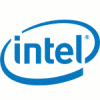- Qualcomm Launches Snapdragon 4 Gen 2 Mobile Platform
- AMD Launches Ryzen PRO 7000 Series Mobile & Desktop Platform
- Intel Launches Sleek Single-Slot Arc Pro A60 Workstation Graphics Card
- NVIDIA Announces Latest Ada Lovelace Additions: GeForce RTX 4060 Ti & RTX 4060
- Maxon Redshift With AMD Radeon GPU Rendering Support Now Available
Beijing IDF 07: Penryn, Teraflops and Skulltrail

IDF Beijing is now underway and there are countless announcements to cover. These include new Penryn performance reports, updated information on their 80-Core processor, a new teraflops technology called Larrabee, new power consumption goals and more.
Page 2 – Servers, Home Media, Final thoughts
|
|
As far as Intel’s high-end server line-up goes, we will be seeing Caneland based systems in Q3 with Xeon 7300 series processors. These will come in both 80 and 50W versions for blades, which will complete the transition to it’s Core microarchitecture for Xeon-based servers.
Though it wasn’t touched on today, at IDF will be ongoing demonstrations of Longhorns Windows Server Core and it’s Windows Server virtualization. The demo will showcase the ability to run up to 8 core virtual machines.
Tolapai is a new codename being thrown around, and it is said to be the first enterprise-SoC that will integrate multiple key system components onto a single processor. This is expected to reduce the chip footprint by 45% and power consumption by 20% compared to a standard four-chip design.
It’s “enterprise” because the goals behind it are to optimize efficiency in servers. QuickAssist is another technology used in conjunction with Tolapai used to optimized accelerators in servers. These accelerators will be based right into the processor itself which will collaborate with a software abstraction layer.
Intel wants in your house, figuratively speaking. They announced that new SoC (system-on-chip) products are on their way for use in internet capable CE devices, such as digital set top boxes, TVs and networked media players. What this should result in, according to their press materials, is faster deployment of applications which prove more cost-effective.
They have also announced a new media processor, the CE 2110 which moves away from their IA instructions set and implements an XScale processing core. This processor is designed to have powerful audio/video capabilities.
Other home networking related products/technologies were discussed, although not that much information was disclosed at this time. Of most interest was the initiative for improved device connectivity. They are showing off an Ultra Wide Band mini-card solution, although that’s all that’s known at this point.
As you may have been able to tell, Intel is not going light at this IDF. They are making so many announcements, it’s difficult to track them all. This could be a good thing, but at this time it’s difficult to tell which technologies will affect us the most.
Intels High-K transistor type will be one technology worthy of getting excited over. Due to the increased efficiency, we should be seeing Penryn, Nehalem and future processors with far more capabilities than what we are used to, such as an on-die GPU and also an IMC, although AMD has utilized that for a while. With the current leakage vastly improved and also power efficiency, it should prove beneficial to every single person who has one. If not just for the fact that it should affect our power bills in our favor. Coupled with low voltage DDR3, it is clearly our GPUs that will force us into megawatt power supplies, if you are an enthusiast.
Skulltrail is another technology that enthusiasts (with large wallets) will be anticipating. Sadly, we will not see this come into fruition until later this year. The motherboards will include dual sockets in addition to four PCI-E slots, although it was not mentioned the bandwidth of each.
There are many additions to their CE/Home Media line-up as well, although we will not see releases until later this year and even 2008. Their standards for home networking initiative is an interesting one, although it’s hard to have a stand given the amount of information available.
Even with all that was announced today, there is still a lot more information to be delivered on day two. Should there be enough interesting (or important) information given, we will follow-up to this article with a part two. As it stands, Intel is on a roll and are not interested in slowing down. Penryn is still the one to get excited for, but their other technologies are well worth being on the lookout for as well.
If you have a comment you wish to make on this review, feel free to head on into our forums! There is no need to register in order to reply to such threads.
|
|
Support our efforts! With ad revenue at an all-time low for written websites, we're relying more than ever on reader support to help us continue putting so much effort into this type of content. You can support us by becoming a Patron, or by using our Amazon shopping affiliate links listed through our articles. Thanks for your support!





